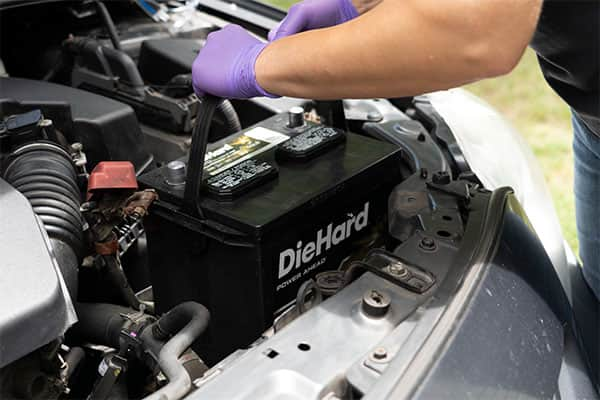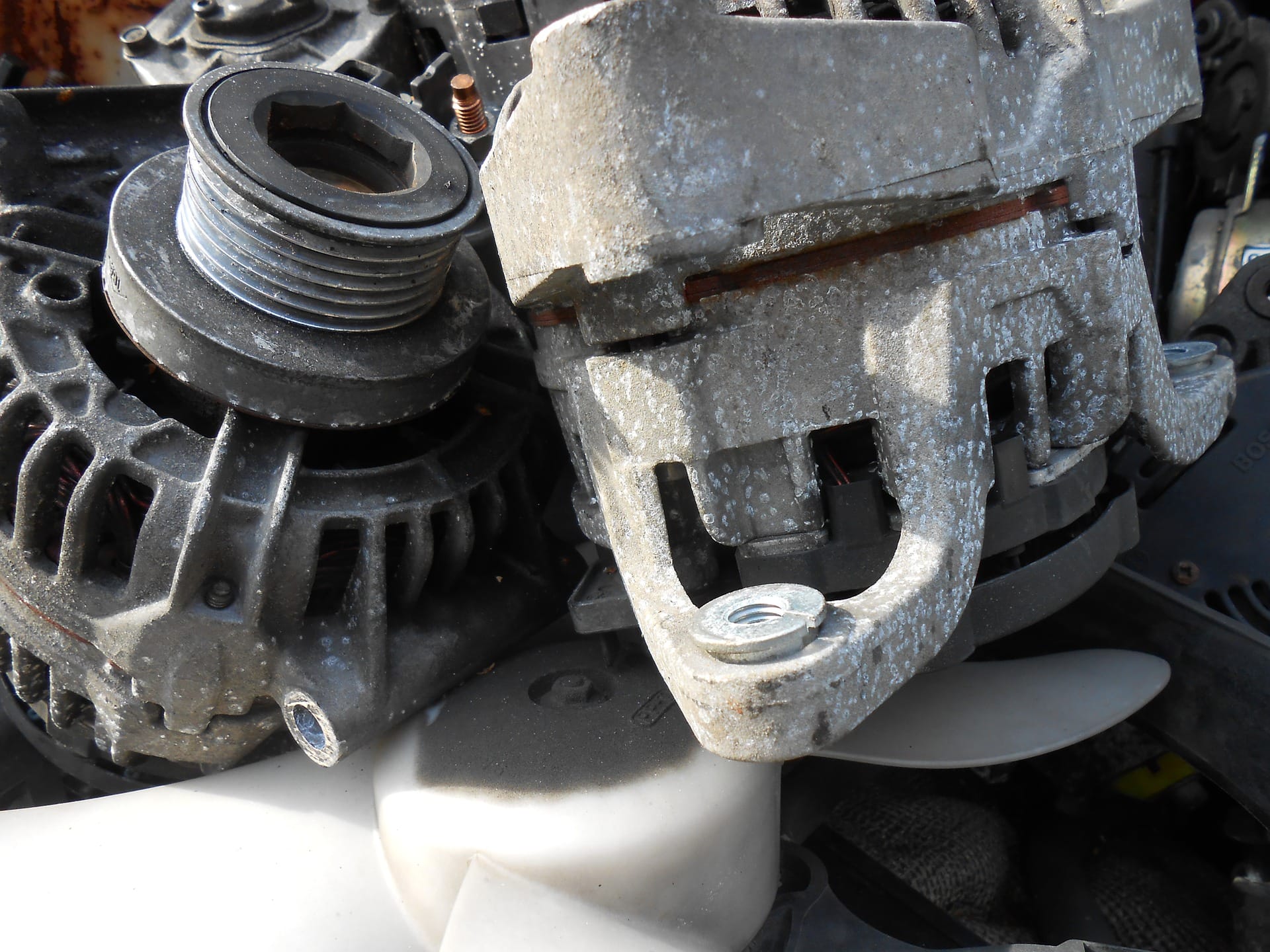Spark plugs are a common vehicle maintenance item, and luckily, they're also inexpensive and not too difficult to replace. Basically, they're the perfect DIY item.

How to choose spark plugs
The place where DIYers get most hung up when it comes to changing spark plugs is knowing which spark plugs are right for their vehicle. The short answer, as is often the case: stick with the plugs recommended in the owner's manual. The manufacturer knows exactly what each engine needs, and the intended spark plugs will meet those needs precisely.
You may have heard that going one step "hotter" or "cooler" on spark plugs will have some performance or efficiency advantage. While that is sometimes the case in certain modified engines, it's generally best to opt for factory-specified plugs.
Still want to look at your options? Here's what you need to know.
The differences between spark plugs
Let’s start with the two most important spark plug facts:
- Sparks like to jump from the sharpest point on the center electrode to the sharpest point on the side electrode. So you want a plug that retains its sharp edge for the most miles. Precious metals like platinum and iridium are harder and have higher melting temperatures than the nickel alloy electrodes found in traditional copper spark plugs.
- The smaller the diameter of the center electrode, the lower the voltage needed to start the spark. Keep those shopping tips in mind as you review the best spark plugs for your vehicle.
In most cases, you’ll see a choice of at least four different types of spark plugs from at least three different manufacturers. How do you know which are the best spark plugs to buy? We’ll further explain the differences between platinum spark plugs, copper spark plugs, iridium spark plugs, and other spark plug types. Plus, we’ll give you some solid advice on which are the best spark plugs for your vehicle.
Always consult your owner’s manual first. Follow the manufacturer’s recommendations to ensure warranties are not voided.
Copper spark plugs — where to use them
Copper spark plugs have a solid copper core, but the business end of the center electrode is actually a 2.5mm-diameter nickel alloy. That’s the largest diameter electrode of all the spark plug types. Remember, the smaller the diameter, the less voltage required to initiate the spark. Nickel alloy is also softer than either platinum or iridium, so the sharp firing edge you get right out of the box tends to wear out quickly. Despite those shortcomings, copper spark plugs are still a good choice for certain applications. Copper spark plugs are best for older (pre-‘80s) vehicles with low voltage distributor-based ignition systems. Don’t use copper spark plugs in high-energy distributor-less ignition systems (DIS) or coil-on-plug (COP) ignition systems. They’ll wear out too quickly.
There’s one exception to that advice. Some late-model high-performance engines were designed specifically for copper spark plugs. In those cases, copper spark plugs are considered to be high performance spark plugs. If your owner’s manual calls for copper spark plugs, don’t upgrade to platinum spark plugs or iridium spark plugs.
Single platinum spark plugs — a step up from copper spark plugs
A single platinum spark plug is basically styled after a copper spark plug with a platinum disc welded to the tip of the center electrode. Since platinum is harder than nickel alloy, it holds its sharp edge for as long as 100,000 miles. Platinum spark plugs also run a bit hotter, preventing spark plug deposit buildup and fouling.
Platinum spark plugs are usually the best spark plugs for newer vehicles with electronic distributor-based ignition systems (DIS). If your owner’s manual recommends platinum spark plugs, don’t downgrade to copper spark plugs to save money. However, you can upgrade to either double platinum spark plugs or iridium spark plugs.
Double platinum spark plugs — twice as good?
Double platinum spark plugs were designed for “waste spark” DIS. In a waste spark system, the spark jumps from the center electrode to the side electrode for the cylinder that’s on the compression stroke. To return the electrical pulse back to the ignition coil pack, the spark jumps backwards (side-to-center) on the partner cylinder. Since the partner cylinder is on its exhaust stroke, nothing ignites, and the spark is “wasted.” You can’t use single platinum spark plugs or traditional copper spark plugs in these systems because the side electrodes aren’t designed to handle the reverse spark. But double platinum spark plugs, with a platinum disc welded to their side electrode, work exceptionally well. Both the center and side platinum discs remain sharp, allowing sparks to fly easily in both directions without causing rapid electrode wear.
If your owner’s manual recommends double platinum spark plugs, then those are the best spark plugs to use. Never downgrade to single platinum spark plugs or copper spark plugs. However, you can upgrade to an iridium/platinum combination plug (an iridium center electrode with a platinum-tipped side electrode).
On the compression stroke the spark shoots from the center electrode to the side electrode.
On the partner cylinder's exhaust stroke, the spark shoots from the side electrode to the center electrode.
Iridium spark plugs — the best kind around
Iridium is harder than platinum, and in most cases, iridium spark plugs last about 25 percent longer than comparable platinum spark plugs. Because iridium is costly, iridium spark plug manufacturers reduce the diameter of the center electrode to as little as .4mm. In addition to saving money, the “fine wire” center electrode on iridium spark plugs increases firing efficiency.
Many car makers require iridium spark plugs or iridium/platinum combination spark plugs for (COP) ignition systems. If your owner’s manual specifies iridium spark plugs, don’t downgrade to platinum spark plugs, double platinum spark plugs or even copper spark plugs. They won’t perform as well as the iridium spark plugs in this case.
As the spark ignites the air/fuel mixture, the colder side electrode tends to “quench” the flame. To combat quenching, some spark plug manufacturers cut a “U” or “V” shaped channel into the “spark receiving” surface of the side electrode. The larger channeled area reduces quenching and allows the flame to grow more quickly. Other manufacturers split the end of the side electrode to reduce the flame’s contact with the side electrode and allow the flame to shoot straight down into the cylinder.
Are these channeled electrodes the best spark plugs you can buy? There’s no industry-wide consensus on whether these designs work better, but if channeled spark plugs make sense to you, buy them. They’ll perform at least as well as a non-channeled plug, if not better.
When you're ready, here's how to replace your spark plugs and change your spark plug wires.
Always replace spark plugs at the recommended service interval. Waiting until later could cause them to seize to the cylinder head, making removal much more difficult. In addition, the wear that occurs past the end of a spark plug’s recommended life will cost you far more in reduced gas mileage than the cost of a new set of plugs.













